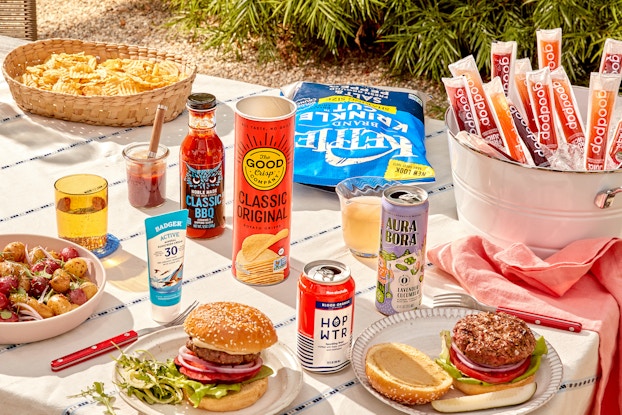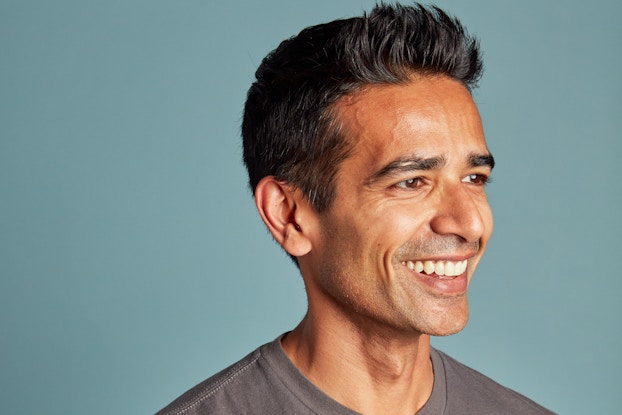
Why it matters:
- Many consumers don’t buy organic food because it isn’t affordable, priced as much as 7.5% more than their traditional counterparts, according to estimates.
- Online grocer Thrive Market is a part of the over $2 trillion consumer packaged goods market.
- The company is on a mission to make organic foods accessible and affordable for all
By some accounts, organic foods are estimated to cost as much as 7.5% more than their conventional counterparts, depending on the product. Sasha Siddhartha wanted to bring affordable organic products to the masses—and in a sustainable way. In 2014, he and his co-founders launched Thrive Market, a membership-based online grocery store that sells curated organic meats, snacks, household, and beauty products at a discount, including its own Thrive Market-branded items.
Integral to the company’s founding—and to how it currently operates—is a commitment to sustainability that’s reflected in every business decision leaders make, says Siddhartha, who’s a co-founder and the company’s Chief Technology Officer. For example, from the start, Thrive Market chose not to ship by air, a method that emits more carbon dioxide than ground shipping, reflecting its goal to achieve carbon-neutral shipping.

Interested in a small business membership?
Find out how the U.S. Chamber of Commerce can help your company grow and thrive in today's rapidly-evolving business environment. Connect with our team to learn how a small business membership can benefit your bottom line and help you achieve your goals.
“That was a guard rail we put into place right away,” said Siddhartha. “Even though it would have added some value for customers, it would have clearly taken away from our sustainability goal.” The company also set its sights on tackling pressing societal issues like food access and affordability and other environmental issues, including waste and plastic.
Over the last nine years, Thrive Market has kept sustainability in mind as it has grown to nearly 1.4 million members nationwide. In 2023, it did more than $500 million in sales and doubled down on its environmentally sustainable operating model, earning multiple sustainability certifications.
Within the past calendar year, the company achieved TRUE Certification for Zero Waste—TRUE-certified spaces have a minimum of 90% waste diversion—and became Climate Neutral Certified, a designation that requires companies to measure, reduce, and compensate for their emissions. It also converted to a Public Benefit Corporation (PBC).
A PBC is a for-profit company that works toward social and public good. Thrive Market changed its business charter to reflect its new structure. “This allows us to cement in our commitment to our mission,” said Siddhartha. “It’s a huge milestone for us.”
It’s proof businesses can be a force for good, according to Siddhartha. Making a positive impact on the planet and maximizing shareholder value can be compatible goals, he said.
[Read: Startups Help Restaurant Takeout Businesses Go Green With Returnable Food Containers]
To distinguish itself with customers, the company maintains a “hyper-curated” selection of only 5,000 to 6,000 unique products compared to the average grocery store’s tens of thousands, or big box store’s excess of 100,000. “We want to reduce complexity for our customers,” Siddhartha said. “We’ve done lot of the lifting to select the best brands and options.”
Tapping into the ‘conscious capitalism’ ethos: Thrive Market aims to serve shareholders, consumers, and the environment
The company is a part of the more than $2 trillion consumer packaged goods market, which is expected to climb to $2.4 trillion by 2028.
“Our mission is to make healthy, sustainable living easy, accessible and affordable for every American family,” Siddhartha said. “Every business decision we make is oriented around that mission and takes us closer to that north star.”
One of the first books the Thrive Market founding team read as a group was “Conscious Capitalism” by Whole Foods Market Co-founder John Mackey and professor and Conscious Capitalism, Inc. Co-founder Raj Sisodia. The team embraced several tenets from the book, which describes Mackey’s philosophical approach to business.
“We took to heart the lesson of building a stakeholders-driven business, one that goes beyond only delivering for shareholders, to customers and the environment,” Siddhartha said. “A lot of this was baked into our strategy from day one.”
Thrive Market built its own fulfillment center to give it more control over its supply chain. “That level of control allowed us to put a stake in ground with sustainability commitments,” he said. The company launched with one small fulfillment center in Los Angeles. Now, it has over a million square feet across three centers.
Selling a ‘hyper curated’ — and affordable —mix of unique products to differentiate from the average grocery chain
To distinguish itself with customers, the company maintains a “hyper-curated” selection of only 5,000 to 6,000 unique products compared to the average grocery store’s tens of thousands, or big box store’s excess of 100,000. “We want to reduce complexity for our customers,” Siddhartha said. “We’ve done lot of the lifting to select the best brands and options.”
Before offering a new product, Thrive Market’s merchandising team vets ingredients in the organic, 100% non-GMO olive oils, grass-fed beef sticks, and hazelnut butters it sells, for example. Team members also perform site visits, taking stock of manufacturers’ supply chain through a sustainability lens.

Buying “narrow and deep” and in bulk makes it possible for Thrive Market to pass on savings to customers, making organic products affordable. Members pay a $60 annual fee and save around 30% off the Manufacturer Suggested Retail Price (MSRP). Most make their membership fee back in two orders. If they don’t for the year, Thrive Market credits the customer the difference.
Currently, more than 50% of paid members are from the Midwest and South, areas underserved with healthy food options, Siddhartha said. That’s also where more than 40% of consumers have a household income of less than $100,000. With every paid annual membership, Thrive Market donates a free membership to a family in need, including veterans and first responders.
Most recently, Thrive became the first ever online-only retailed to receive USDA approval to accept SNAP EBT payments. It’s another major step toward making organic groceries more accessible and affordable.
An AI-driven shopping cart that ‘introduces people to products they may not use otherwise’
Meanwhile, employing new technologies to enhance customer service is a major focus, too. Siddhartha hopes a data-driven personalization engine and artificial intelligence will make it easier for customers to shop.
Recently, Thrive Market launched a new customer onboarding experience, which includes a short sign-up questionnaire. Customers answer questions about their household demographics and allergies. Thrive Market then pre-builds a starter basket. Almost half of the customers who’ve been onboarded in this way buy from the basket, he said.
“It’s introducing people to products they may not use otherwise,” Siddhartha said. “We’re early days with our AI cart and will continue to innovate on that going forward.” One possibility is using AI to build subsequent orders. It’s another step that could further remove barriers to healthy, sustainable eating and helps attract more customers. “We always have ambitious growth goals,” Siddhartha said.
CO— aims to bring you inspiration from leading respected experts. However, before making any business decision, you should consult a professional who can advise you based on your individual situation.
CO—is committed to helping you start, run and grow your small business. Learn more about the benefits of small business membership in the U.S. Chamber of Commerce, here.







